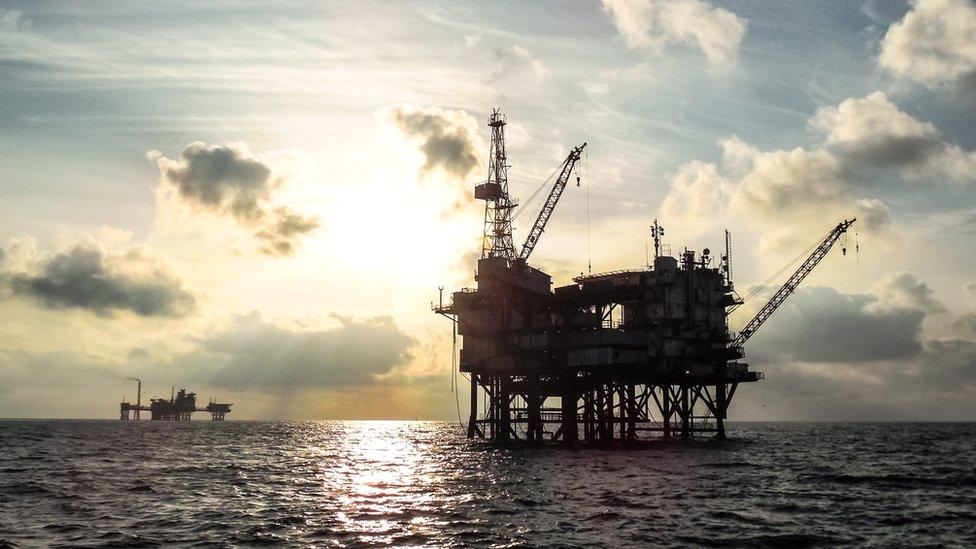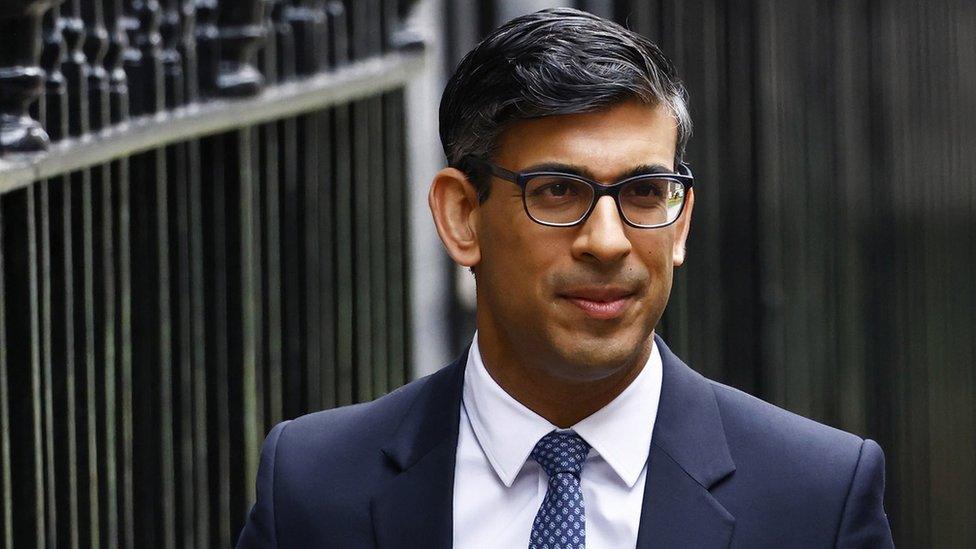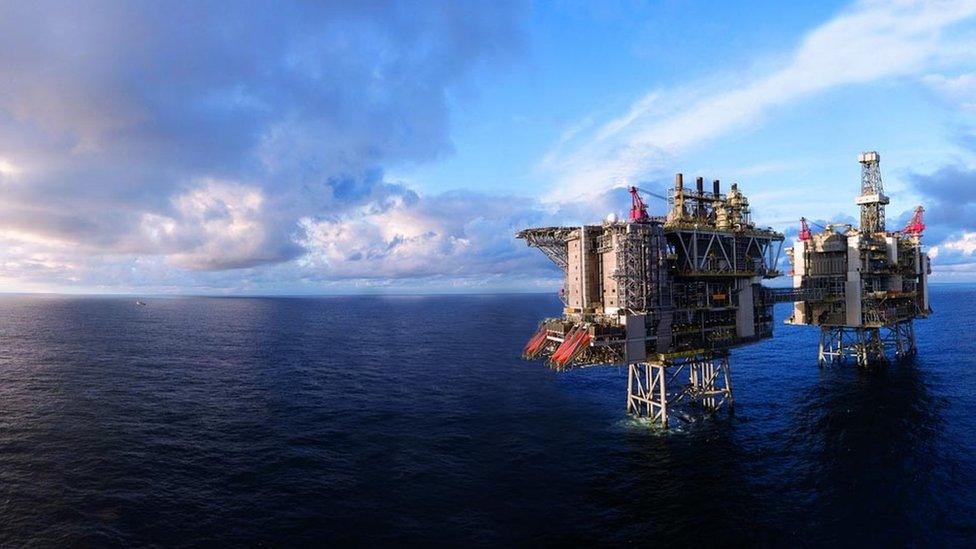Gers - beyond the indy debate
- Published

Energy has come back to dominate Scotland's public finances, on both sides of the tax and spending ledger. But its role in the independence debate has changed since the 2014 referendum.
Beyond that constitutional debate, the figures give us insights into the vulnerabilities of Scotland's tax base, and the huge rise in the cost of government debt.
Why does the Scottish government publish the Government Expenditure and Revenue Scotland (Gers) report?
Some supporters of independence see it as a form of masochism, and wish ministers could devise a way of publishing figures alongside it that make the prospects of independent control of the public finances a bit more appealing.
We've had such a publication promised, but it's difficult, both politically and in economic forecasting terms. Everything in it would rely on numerous policy choices for a future Scottish government.
Every such choice would be open to hostile scrutiny, and criticism from other supporters of independence who might wish a different choice.
The official answer to the question 'why publish it?' is that it is intended to help public understanding of Scotland's public finances. And at a time when the prospects of a referendum seem somewhat more distant, there are some elements of it that shed a non-constitutional light on taxation and spending.
So what can we learn? One lesson is that pandemics and energy crises mess with public finances.
Every country faced much higher health and economic support spending through two years of Covid.

The Gers publication two years ago showed a notional deficit at twice the size revealed today - £38bn, or 23% of total output from the economy, while the UK as a whole hit 15%.
Last year, covering 2021-22, the Scottish notional deficit fell to £25bn, and nearly 13% of Gross Domestic Product (GDP).
Tax and spending is a lot closer to being in balance in the most recent figures with that Covid cost all but stripped out.
Volatile oil
However the most recent year, 2022-23, feels the impact of the surge in energy prices.
That meant a lot was spent, most of it by the UK government, supporting households and businesses through much higher bills. Scotland takes its share of that.
Those higher bills fuelled price inflation, which in turn provoked the Bank of England into trying to dampen inflation with higher interest rates.
The costs of servicing Scotland's share of that debt also weighs on the Scotland-only figures. More on that later.
On the other hand, the energy price hike that followed on Russia's invasion of Ukraine was good for producers of oil and gas. Their profits soared, the tax take soared proportionately, and then two tranches of windfall tax were applied, raising nearly £5bn on top.

Gers gives Scotland a geographic share of 89% of revenue from oil and gas production in UK waters.
So tax from that source soared from £750m two years ago, to £2.4bn last year, to £9.4bn in the most recent figures.
It is the most volatile part of UK taxation, and its volatility makes even more of a difference to the reckoning for Scotland.
Tax base
Another lesson is how Scotland's tax base is estimated to vary from that of the UK as a whole. It has long been the case that Scotland pays more than its population share for the vice taxes: alcohol, tobacco and gambling.
That also goes for environmental levies and business rates, as an indication Scottish business groups will cite as a signal of the Scottish government being somewhat less helpful or more hostile to them than firms south of the border.
The categories where Scots pay tax at less than their population share should be no surprise; capital gains tax at less than half the population share, and similarly low levels for inheritance tax. There is, unsurprisingly, less wealth to be taxed than in England, or to be more precise, the south-east of England.

It was revealed earlier this year that most of Rishi Sunak's earnings came from capital gains
Income tax, while largely devolved to Holyrood, raises 24% of all the tax raised in Scotland and linked with that is National Insurance, which raises 20% of the total.
Income tax comes to only 6.7% of the UK total, despite higher rates on higher earners, while National Insurance, levied by the Treasury, is 7.5%, against a population share of 8.2%.
That reflects lower average earnings. Rather than accept as much, it can be seen as a central challenge to the Scottish government's finances. If it is to raise income tax revenue to deliver the higher level of public services to which it aspires, it is not enough to raise tax rates: it also needs to strengthen the tax base.
Cheap finance
On the expenditure side, Gers highlights how much of total spend is on the state pension and reserved welfare payments, at more than quarter of the total. Health takes more than 16%. The health budget was cut after the two year surge in spending due to Covid, but it's still nearly a third up on 2019.
One of the biggest claims on the public purse last year was £10.9bn, or nearly one tenth of expenditure, in Scotland's share of interest payments on public sector debt.
It's more than twice the amount spent on transport or attributed to Scotland for defence. It's nearly three times the amount spent on public order and safety (police and justice). It's more than education and training.
As borrowing and interest rates have risen steeply, the cost of servicing debt has more than doubled in the past two years, from £4bn, eating a huge tranche of funds that could be spent elsewhere.
Borrowing to fund infrastructure and get the economy onto a faster growth path can be well worth it. It's a necessary part of government finance. But when interest rates rise and the bills come in, Gers is a reminder that we've reached the end of a historic era, lasting 14 years, of cheap finance.
- Published16 August 2023


